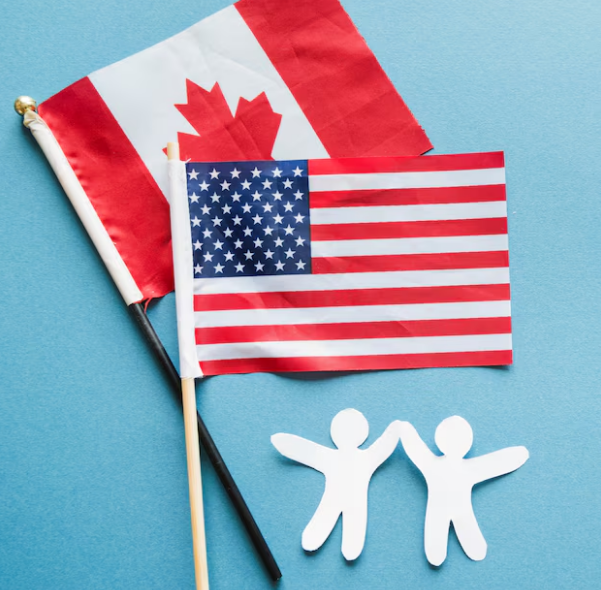Planning for retirement is a critical aspect of financial security, and understanding how pension systems work in different countries can make a significant difference in how workers prepare for their golden years. The United States and Canada, while geographically close and economically interlinked, have distinct pension systems that reflect their unique economic policies and social priorities.
This article explores the differences and similarities between pension plans in these two countries, offering insights into what workers need to know to make informed decisions.
Understanding the structure of pension systems

The pension systems in the United States and Canada are rooted in distinct frameworks. In the United States, pensions generally fall into two categories: Social Security and employer-sponsored retirement plans, such as 401(k)s and defined benefit pensions. Social Security is a federal program funded by payroll taxes, providing benefits to retirees, disabled individuals, and survivors.
In Canada, the structure is somewhat similar but includes unique elements. The Canada Pension Plan (CPP) is the backbone of the system, complemented by Old Age Security (OAS) and, in some provinces, additional benefits under the Guaranteed Income Supplement (GIS). Like Social Security in the US, CPP is funded through mandatory payroll contributions.
One of the key differences lies in the comprehensiveness of public pensions. While the US Social Security system provides benefits based on lifetime earnings, Canada’s combination of CPP, OAS, and GIS often results in a broader safety net for lower-income retirees. However, the adequacy of these systems varies, and workers in both countries frequently rely on private savings to meet their retirement goals.
Contributions and benefit calculations
The way contributions are made and benefits are calculated can significantly impact retirement income. In the United States, Social Security contributions are based on a percentage of the employee’s income, with a maximum taxable earnings limit. The benefits are calculated using a progressive formula, meaning lower-income workers receive a higher percentage of their pre-retirement earnings than higher-income workers.
Canada’s CPP operates on a similar contributory basis, with employees and employers each contributing a percentage of the employee’s earnings up to a yearly maximum. The benefits are also calculated based on contributions made over the worker’s career. However, the inclusion of OAS, which provides a flat-rate benefit, introduces an additional layer of income security, particularly for individuals who may not have contributed consistently to the CPP.
A notable difference is the treatment of spousal and survivor benefits. Both countries offer provisions for spousal benefits, but the formulas and eligibility requirements differ. In the US, Social Security allows spouses to claim up to 50% of the higher-earning spouse’s benefit, while Canada’s CPP survivor benefits are typically a percentage of the deceased contributor’s benefit.
The role of employer-sponsored plans
Employer-sponsored retirement plans play a crucial role in supplementing public pensions in both countries. In the United States, defined contribution plans like 401(k)s have largely replaced traditional defined benefit pensions. These plans allow employees to contribute pre-tax income, often with an employer match, to a tax-advantaged account. However, the responsibility for investment decisions and risks lies with the employee, making financial literacy critical.
In Canada, employer-sponsored plans include RPPs and group RRSPs. While similar to the US system in terms of tax advantages and employee contributions, Canadian plans often feature less emphasis on employer matching. Additionally, defined benefit pensions, which provide a guaranteed income in retirement, remain more common in Canada than in the US. This difference reflects varying trends in labor markets and employer practices.
Another important distinction is the regulation of these plans. US retirement plans are subject to the Employee Retirement Income Security Act (ERISA), which establishes minimum standards to protect plan participants. In Canada, pension plans are regulated at the provincial level, leading to differences in rules and protections across the country.
Tax implications of retirement savings
Taxation is a critical factor in retirement planning, and the tax treatment of pensions and savings differs between the US and Canada. In the United States, contributions to 401(k) plans and traditional IRAs are tax-deferred, meaning workers do not pay taxes on these contributions until they withdraw the funds in retirement. Similarly, Social Security benefits may be subject to taxation, depending on the retiree’s income level.
In Canada, RRSP contributions are also tax-deferred, offering a comparable benefit to the US system. Withdrawals, however, are fully taxable as income. CPP benefits are taxed as income but are often supplemented by OAS, which is also subject to income testing. Higher-income retirees may face a clawback on their OAS benefits, reducing the overall amount received.
A significant difference lies in the treatment of Roth IRAs in the US and Tax-Free Savings Accounts (TFSAs) in Canada. Roth IRAs allow for tax-free withdrawals in retirement, provided certain conditions are met, making them an attractive option for tax planning. TFSAs, on the other hand, allow after-tax contributions, but withdrawals are entirely tax-free, including investment gains.
Challenges and opportunities for cross-border workers
For workers with careers spanning both countries, navigating the pension systems can be particularly complex. Totalization agreements between the US and Canada ensure that contributions made in one country can be credited toward eligibility in the other, preventing workers from losing benefits due to mobility. However, the rules for benefit calculation under these agreements are intricate and require careful consideration.
One challenge for cross-border workers is currency fluctuations, which can impact the real value of benefits received from one country while living in the other. Additionally, differences in healthcare systems and retirement costs may influence where retirees choose to settle.
Despite these challenges, cross-border workers have unique opportunities to diversify their retirement income sources. By understanding the nuances of both systems, they can strategically plan their contributions and withdrawals to maximize benefits and minimize taxes. Financial advisors with expertise in cross-border issues can be invaluable in navigating these complexities.
Conclusion
Understanding the pension systems in the United States and Canada is essential for workers in both countries, particularly in an era of increasing globalization and mobility. While both systems share similarities in their reliance on public and private savings, their differences in structure, contributions, taxation, and regulation can significantly impact retirement outcomes.
Workers must take the time to educate themselves, plan strategically, and seek professional advice where necessary to ensure a secure and comfortable retirement. By doing so, they can navigate the complexities of these systems and make informed decisions that align with their long-term financial goals.





